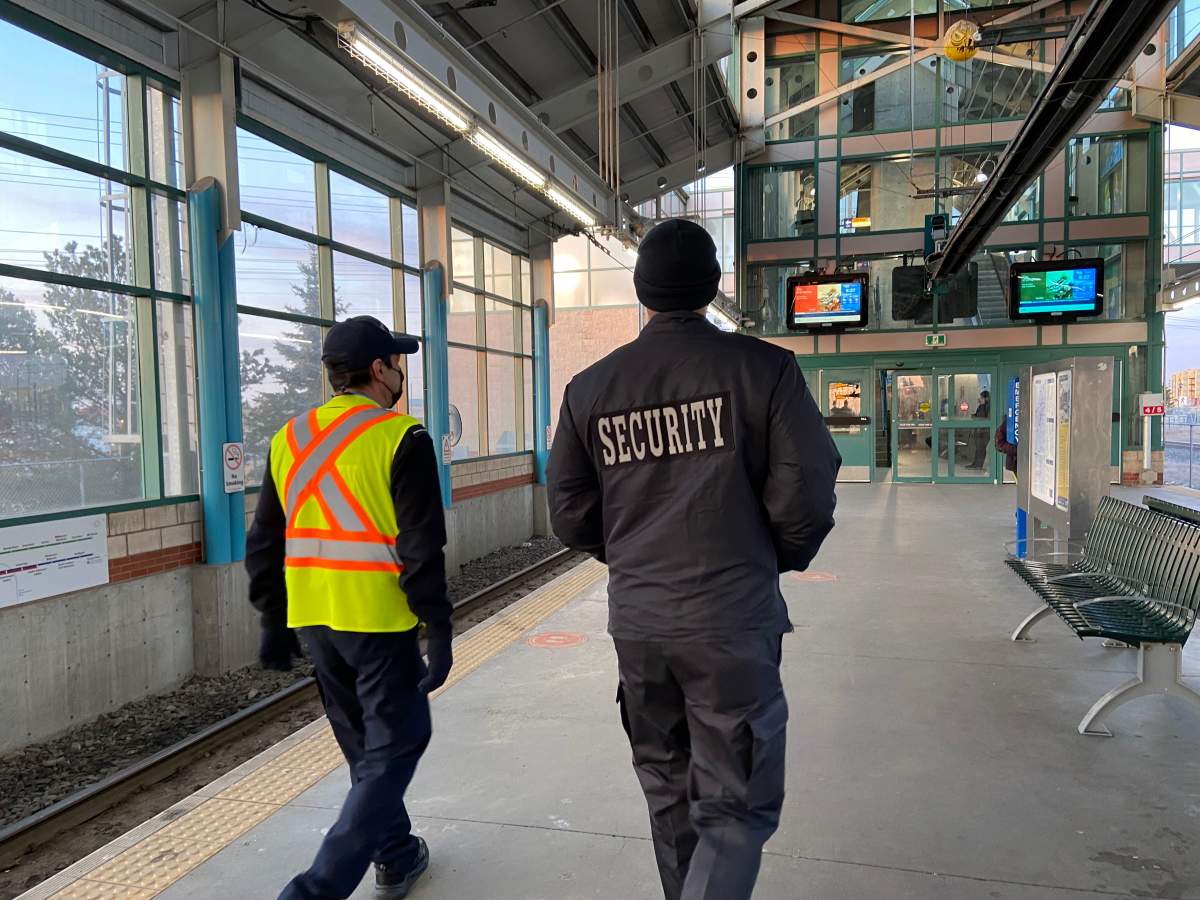This is Part 1 in a three part series on LRT transit safety. Global Edmonton also explored this topic on Global News Hour at 6 on April 27-29. Part 1 focuses on the rider experience. Part 2 explores how the LRT impacts nearby neighbourhoods and general community safety. Part 3 features city council and Edmonton Police as both groups explore solutions.

Widespread drug use, aggressive encounters and the stench of human waste — it’s all part of the daily commute for LRT riders in Edmonton.
Global News spoke with numerous riders who said they often feel uncomfortable or unsafe inside the train station or on the train itself.
On a recent LRT ride from the Coliseum station to NAIT, Jorg Schlagheck said he immediately stumbled upon hard drug use and later, a possible overdose.
“It’s unacceptable, period. We shouldn’t get used to this stuff happening and become desensitized,” he said.
For years, Schlagheck said his first choice for getting around has been public transportation, but he doesn’t feel that way anymore.
Most LRT users expressed problems with the transit system early in the morning or late at night. One woman told Global News that on her 6:20 a.m. train to work, she saw a person with a small propane blowtorch light a pipe.

Rider Kathy Hamelin said there’s a distinct shift in the system on her way home from work.
Hamelin, who considers herself a “community grandmother,” said she recently assisted a man who overdosed at Central Station.

Get weekly health news
“A woman was already trying to help him and together we turned him over on his side,” she explained.
“A lot of the people who are houseless — I carry with me my smudge bag — I will offer them a smudge. We need more people like me, rather than those who are adversarial.”

Transit troubles
Fourteen-year-old Kara said she and her friends were pepper-sprayed at Central Station after an altercation with another group.
The teen said they called the police after the incident because the hired security guards on duty did not immediately take action.
“They didn’t really do anything and it didn’t really feel safe,” she said.
The hired guards who wear yellow jackets are not employed by the city. Their job is to “observe and report,” according to Steve Bradshaw.
Bradshaw is the president of Amalgamated Transit Union Local 569. He said members report incidents of conflict and violence almost daily.
“We’re concerned too. We work very hard with the city to promote ridership. When you have situations like that, it becomes very hard to attract your ridership.”
“What we hear from our members, almost daily, is about the incidents of aggression and violence on the system.”

So far this year, the Edmonton Police Service has recorded 549 LRT and transit centre disturbances, including 130 violent incidents and 42 weapons complaints.
The City of Edmonton reports medical aid calls have increased 819 per cent since 2017. In 2021, peace officers responded to nearly 1,500 medical calls on ETS property and about 8,000 welfare checks.
“There’s a lot of callout for overdose. That’s a growing problem on the system. Weapons callouts are up. These are very concerning things.”
Transit rider and former city councillor Michael Walters said it cannot be up to transit riders to be weighing, at any given moment, whether they are safe or if they need to help somebody at risk.
“What I see these days is what I call an over-conflation of trying to make transit safer and trying to solve the long-term root issues of poverty and mental health and addiction,” he said.
He said citizen transit safety concerns aren’t new, but the pandemic is. He said issues like homelessness and a toxic drug supply are worse. Walters said that doesn’t mean addressing those issues should be put to the sidelines — but there’s a specific issue that needs focus.
“Transit needs to get you where you need to go and you need to be safe and comfortable when you’re on route,” Walters said.
‘Where are you going to go?’
Global News spoke with a group of people who is currently sleeping rough or staying in shelters about the situation inside the LRT.
Those folks said LRT stations have become makeshift supervised consumption sites because they are high-visibility areas. They said if someone overdoses, they know they’ll get help more quickly.
“I mean, they do use drugs. But where are you going to go and take your drugs and all that? You have to stay warm, too. I know that,” one person told Global News.
He also agrees with many riders: the status quo needs to change.
Riders tell Global News they don’t believe the system is working for anyone.
“Something has got to be done about it,” Schlagheck said. “Otherwise there’s no point in having an LRT.”










Comments